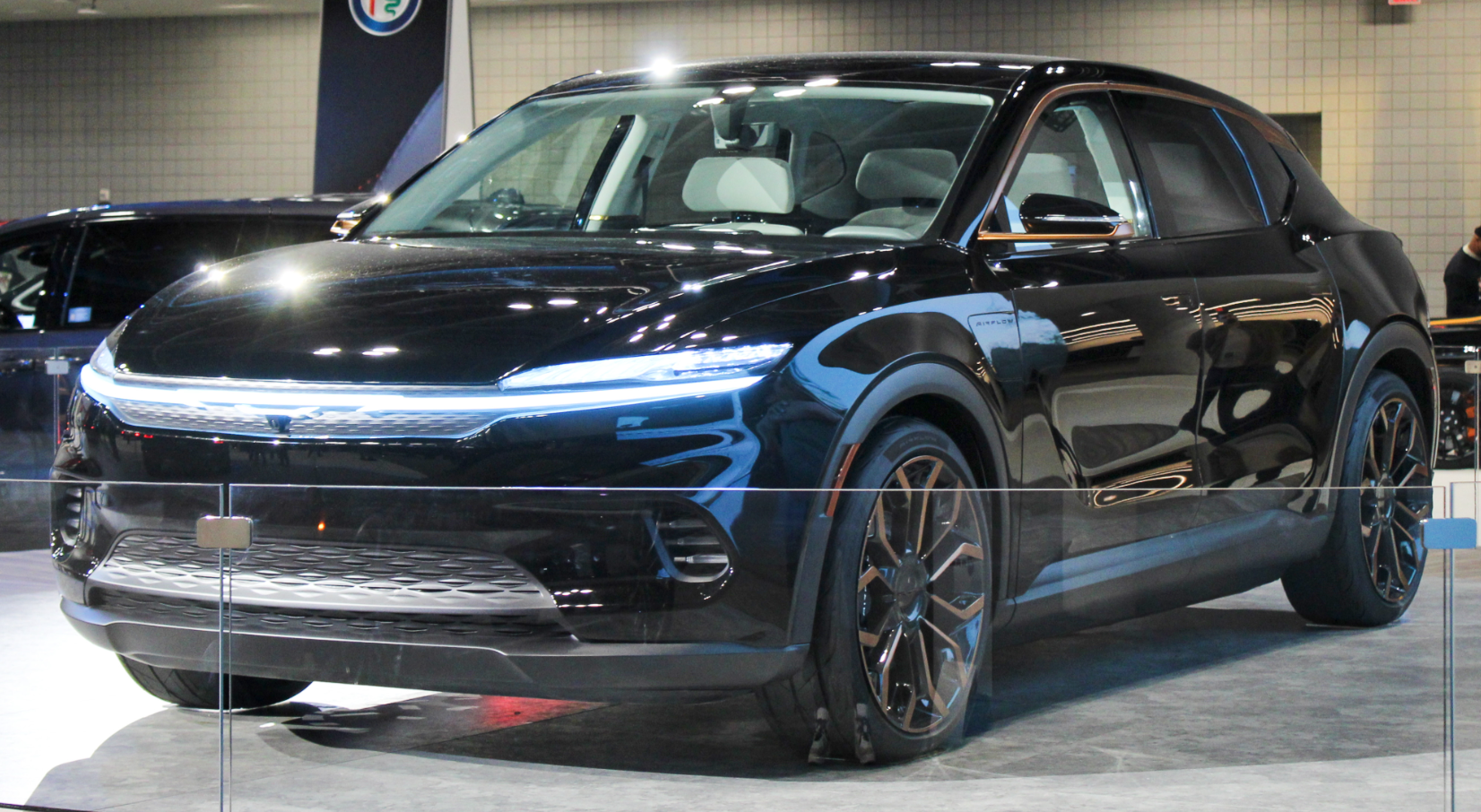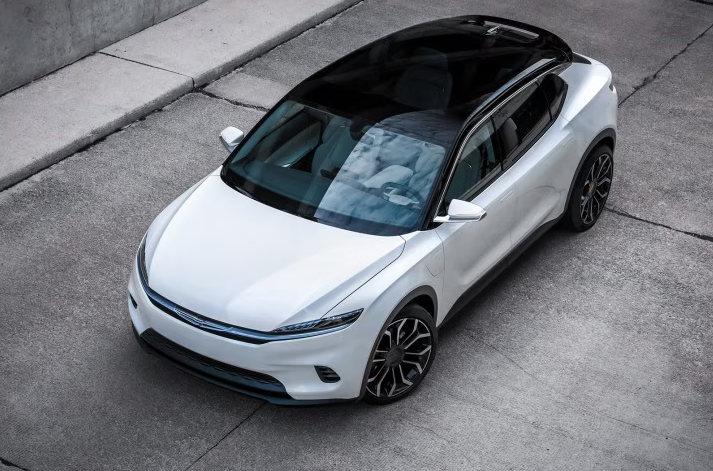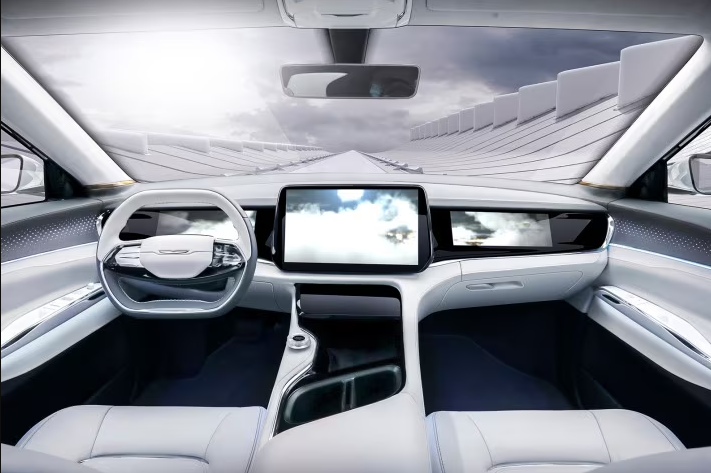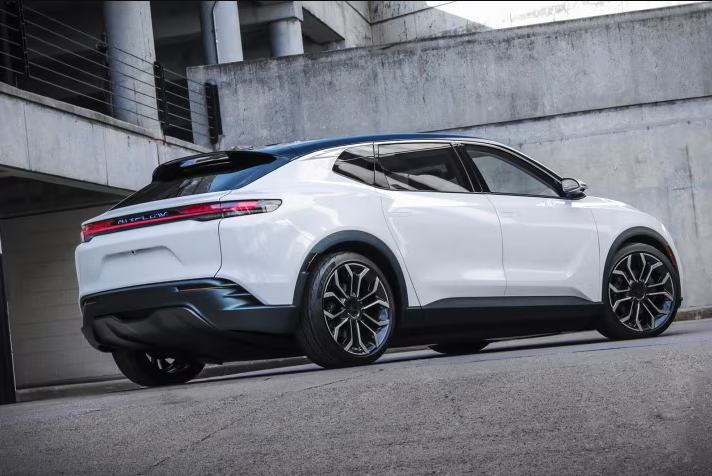2026 Chrysler Airflow: The Future of Electric Luxury SUVs. If “luxury electric SUV” makes you think “quiet, boring ride,” brace yourself — the 2026 Chrysler Airflow is trying to shift that perception. With bold styling, smart tech, and promised long-range capability, it’s one of the most compelling concept-to-production EVs on Chrysler’s radar. Below, I dig into what we know so far — and what makes the Airflow both a dream and a potential game changer.
Exterior
From the first glance, the Airflow looks like a future-forward crossover. Its profile is sleek and aerodynamic, with a low roofline, sculpted surfaces, and minimal drag cues. The lighting is striking — full-width LED light bars up front and back, crystal-style accents, and an illuminated Chrysler Wing insignia that ties the visual identity together. The body appears to float, thanks to hidden wheels and smooth surfaces that avoid clutter.
The concept also displays a smooth underbody, contoured side skirts, and flush door handles — all engineered for efficiency. The overall effect: it doesn’t just look electric, it feels electric. It suggests not just a drivetrain shift, but a fresh design philosophy from Chrysler.
Interior & Tech & Comfort
Inside, the Airflow leans into minimalism and digital immersion. The layout is open and airy, thanks in part to a panoramic glass roof and slim “pedestal” seating. The front row is driver-focused, with a digital dash and a large central display, while the rear seats are sculpted and modern, with individual screens and ambient lighting meant to respond to passenger mood.
Materials lean toward the sustainable — mixed textiles, recycled surfaces, and accent trims that feel premium without excess. Chrysler’s “SmartCockpit” vision is showcased here: one where the car learns your preferences, adapts to your routines, and even integrates digital home or work environments. OTA (over-the-air) updates are baked in, so the Airflow could evolve long after you drive it off the lot.
Powertrain & Performance
This is where the Airflow promises to deliver. The current concept shows a dual-motor (front + rear) layout, giving all-wheel drive capability. Each motor is spec’d at roughly 150 kW, making for solid combined output.
The battery is expected to be large — on the order of 118 kWh, with claimed ranges reaching up to 400 miles on a full charge in its ideal form. That positions the Airflow competitively among long-range EVs. The concept also mentions AI-based systems (STLA Brain) and the potential for Level 3 autonomous driving (STLA AutoDrive) for hands-free operation under certain conditions.
Here is a speculative spec summary based on current projections:
| Specification | Value / Estimate |
|---|---|
| Battery | ~118 kWh |
| Range | Up to ~400 miles |
| Drive Layout | Dual-motor AWD |
| Motor Power | ~150 kW front + rear |
| Autonomous Capability | Level 3 (AutoDrive) |
| Charging | Fast-charging support (details TBD) |
That said, it’s important to remember: this is still a concept. Production realities — cost, regulations, infrastructure — may shift these numbers. Some reports even hint the project has been paused or delayed, though Chrysler maintains it’s not dead.
Price & Availability
No official pricing for 2026 is confirmed yet. Based on the tech, battery size, and class, it’s reasonable to expect the Airflow to land somewhere in the $50,000 to $70,000+ range in U.S. markets — with trim levels offering a spread of performance, battery, and autonomy features. The entry versions may feature single-motor or lower-spec packs, while higher trims push priority features like AWD, boosted power, more autonomy, and premium interior touches.
Some industry chatter suggests Chrysler may stagger the rollout: start with limited-production early models, perhaps in 2026 or 2027, then scale in subsequent years. Because the concept is so ambitious, Chrysler might adjust pricing or tech to make it more feasible for volume buyers.
Safety & Driver Assistance
Safety is integral to the Airflow’s promise. The EV concept includes an array of advanced driver aids: automatic emergency braking, lane-keeping assist, blind-spot detection, adaptive cruise, and more. But its real differentiator lies in STLA AutoDrive, which aims to provide Level 3 autonomy — meaning the car can handle steering, braking, and acceleration under certain conditions, letting the driver relax (within limits) when highway-appropriate.
Chrysler’s STLA Brain software architecture underlies this, allowing AI-based driver support, OTA updates, and a cockpit that learns your habits. Also expected: surround-view cameras, sensor arrays, advanced radar/LiDAR integration, and predictive systems that anticipate road hazards or user behavior.
Why the 2026 Airflow Matters
The 2026 Chrysler Airflow isn’t just another EV concept. It represents a bold statement: that Chrysler wants to evolve, not simply survive in the electric age. If built as envisioned, it will challenge the narrative that luxury EVs must come from today’s premium brands. The combination of long range, autonomy ambition, design finesse, and smart tech could make it a serious contender.
That said, it carries risk. The development is reportedly delayed or paused at times. Real-world trade-offs — battery cost, production complexity, market pricing — will define how much of the concept carries over to the roads. But, as a vision, it’s catchy, ambitious, and full of promise.



